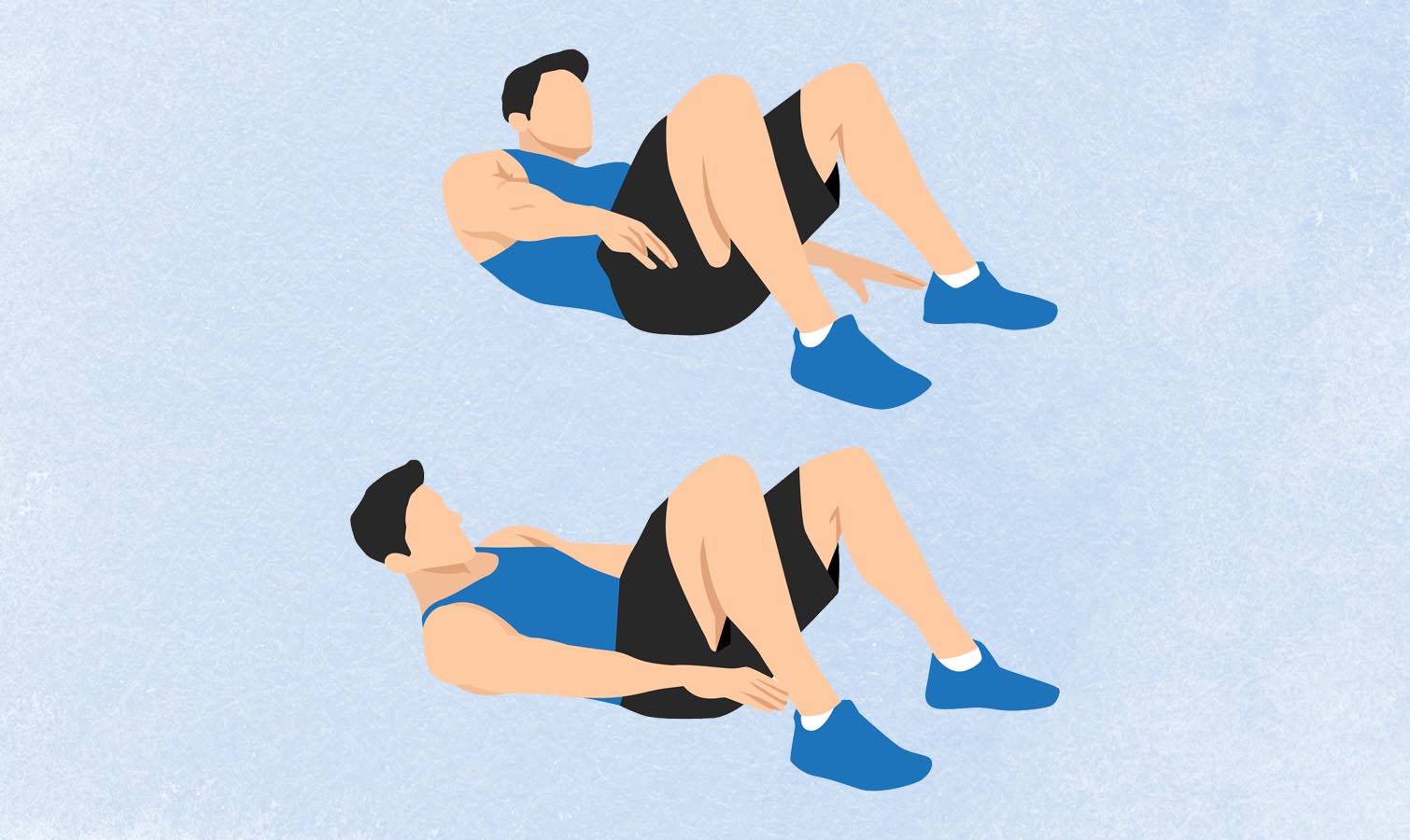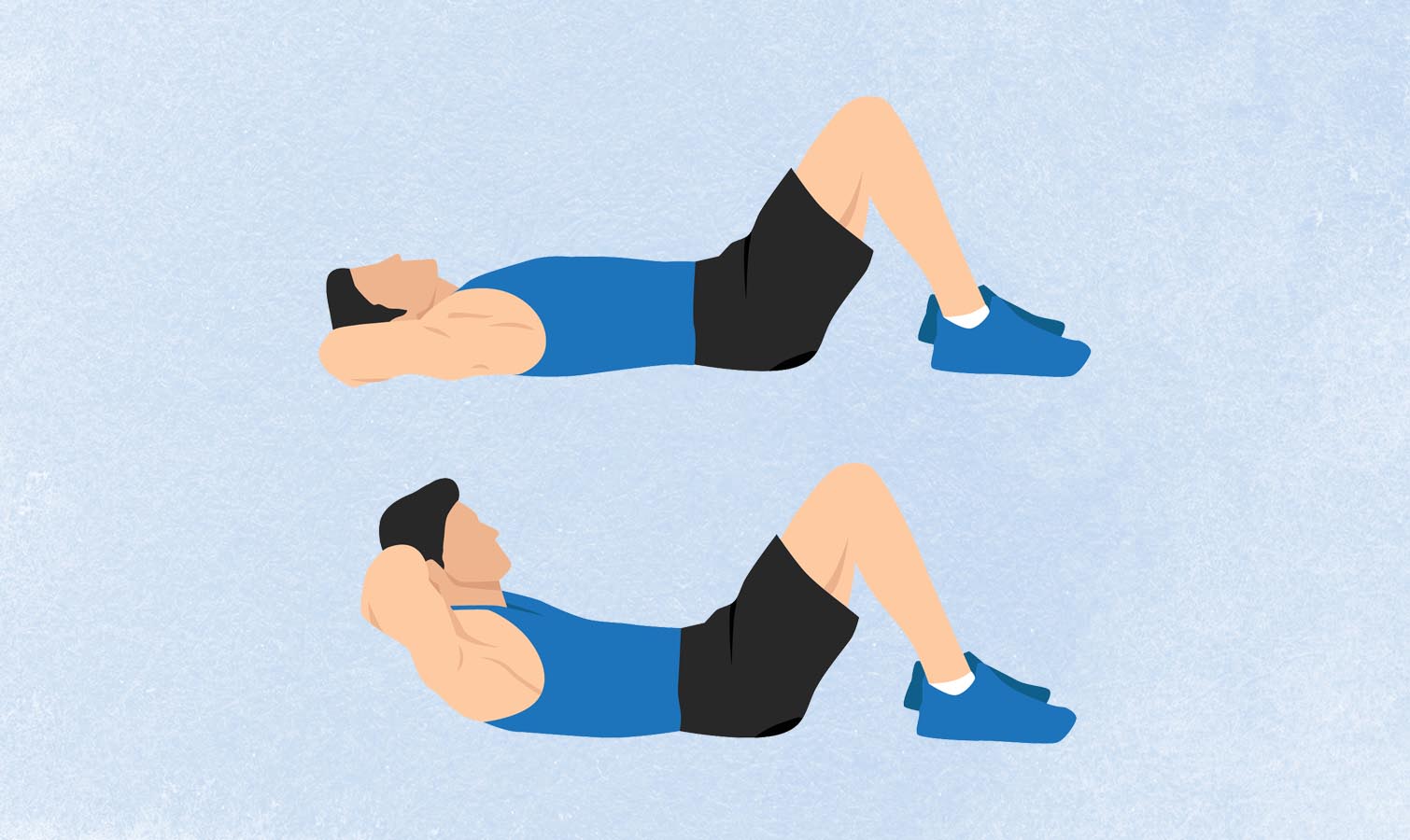I did the side-to-side crunch for a week — here’s what happened to my abs
A variation on the crunch — with lots of variety

A long, long time ago, I bought one of those ab crunch roller devices, the one that looks a bit like two snakes sitting up and whispering to each other about a nearby mouse. You lay back on the headrest, placed your arms on the bar above and sort of rocked forward and back. After a few weeks, I was draping jackets over it. I’m not saying it didn’t do the job, or that I had lots of jackets — I’m just saying it just didn’t do the job for me. Then, for a while, I ran and did no other exercise because when you’re young, you think you can do whatever the heck you please and your body will look after itself. Madness.
As I got older and learned more about the importance of core strength for overall stability, posture, and helping to protect against lower back pain — which had bedeviled me for years—I returned to core-strengthening work, and it has done the job for me. But I’ve often wondered about the side or oblique crunch. It’s always seemed ungainly and I’ve often felt I was putting pressure on my neck muscles, which was probably my body’s way of letting me know I wasn’t doing it properly. If you’ve ever felt that way, the side-to-side crunch may be just the thing for you.
What is it?

Well, there are a few ways to perform the exercise, which is what I did, in the interests of reader service (no, no, it was my pleasure) and to see which of them was best for working the obliques, or side abs. For the most basic move, you lie on your back, with your knees bent and arms by your sides. Brace your core to raise your head and shoulders (do not bend your neck), and slide your left hand down towards your left foot, return to start position and then slide your right hand down towards your right foot. (The move is sometimes called the heel tap.) Aim for three sets of 20. This is relatively easy, but if you have back problems, consult a medical professional before you try this one, or any core-strengthening exercise.
The first variation I tried involved raising my legs as straight and high as I could while I reached down with my arms as before. This is, as you can imagine, harder.

Tougher still is the version you’ve probably seen people do in a gym or a park. For this one, you begin with feet planted, knees bent, and hands at the back of your head with elbows out, to support your neck. From here, breathe in and engage your core to raise your right shoulder and upper torso, and drive your elbow towards your left knee (don’t simply draw your arm in towards the elbow). Again, don’t bend your neck; if you find your chin resting on your chest, you’ll know you’re not doing this one right. Lower with control back to start position and repeat the move on the other side. Start off with three sets of 10, if possible. This one is a tester.
I did side-to-side crunches every day for a week — here’s what I learned
In this move, your form is vital. With some exercises, you can just about get away with less-than-ideal execution — you won’t enjoy the full benefit, but you’ll get some kind of workout. With the crunch, form will help ensure you don’t injure yourself, so take your time.
If something feels too easy, pay attention
I enjoyed doing the basic, straight-arm, reach-down-to-the-sides move, but I have to admit this was because it wasn’t much of a challenge. I tried to make it harder by raising my upper body a little further, but unless you’re careful, this can bring the lower back into play, which is the last thing you want. I concentrated on curling up using my core muscles, but didn’t feel I was getting a decent workout even after three sets of 30. And most of the effort was going into raising my shoulders and holding the position, rather than the side-to-side movement. However, if you’re new to core exercises, this is a great place to start. Just make sure you’re using those muscles to slide down to the left and right, and not just dropping your shoulders to reach further.
Sign up to get the BEST of Tom's Guide direct to your inbox.
Get instant access to breaking news, the hottest reviews, great deals and helpful tips.
Brace yourself
As noted, the variation with legs high and straight is more of a challenge, but it retains the sliding motion of the basic move, which left me cold. So I knew what I had to do: The hard one. I’ve found that trying to keep my feet planted while raising my upper torso and twisting to the left and right takes focus away from the point of the move (those with extremely powerful core muscles will disagree), so for this variation I slid my feet under the couch to keep them in place. This is, for me, one of the hardest core exercises, and for that reason it brings an immense sense of achievement. Don’t rush it, don’t rely on your lower back muscles to lift your upper body from the floor, and don’t feel you have to touch your knee with your elbow. You’re not playing tag with body parts.
This is a superb core exercise, but as I did it, I felt it was working the rectus abdominis (the so-called six-pack), far more than it was working the obliques. If you want to focus on your obliques, try the side plank, or, my favorite, the Russian twist.
Core work will always be a part of my exercise regimen, not only because I find a strong midsection makes running easier, but because it’s vital for everyday activities. Also, when I’m old, I wish to walk about with a stately, fluid and erect gait (I may carry a cane, but this will be for appearances only). To this end, core work will remain core. And by the by, I haven’t had lower back pain in years.
More from Tom's Guide
John is a writer and editor based in London. He was worked for magazines such as Runner’s World, Men’s Health, Women’s Health and Cosmopolitan. A keen runner, what he lacks in ability he makes up for with enthusiasm and excuses.

